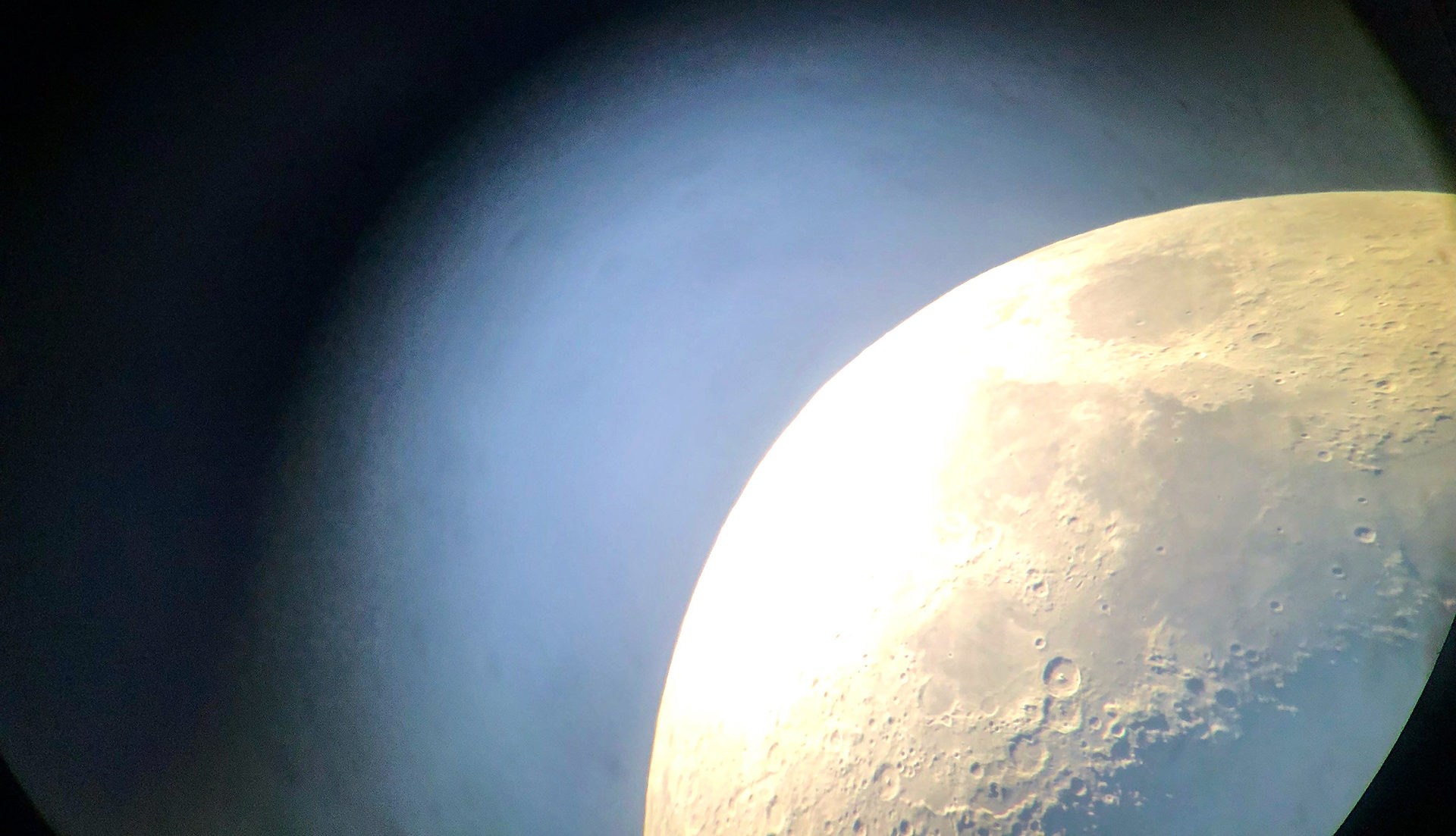One Giant Leap In Southold

“My mother told me that when I was three or four years old, we were walking in Jersey City when I saw a big, bright, full moon in the sky and said, ‘I want that,’” said Barbara Lebkuecher, who has been the treasurer at the Custer Institute and Observatory for nearly 40 years. “I have always been drawn to — and fascinated by — the moon.”
Lebkuecher, a Jamesport resident, got her wish 50 years ago when she watched the Apollo 11 moon landing mission on her 33rd birthday, wide-eyed and alone in her living room.
“I looked at the TV, ran to my back door, looked at the moon, thought, ‘Holy crap! There’s men walking up there!’” Lebkuecher recalled. “Then I ran back into the living room and watched it on TV again.” Lebkuecher remembers seeing that “one small step” for 38-year-old Apollo 11 Commander Neil Armstrong of Wapakoneta, OH, which proved to be a leap for mankind so giant that 600 million people watched along on television.
This Saturday, July 20, the Custer Institute will celebrate that milestone when astronomer Ed Anderson, a member of the Astronomical Society of Long Island and of the institute, will give a presentation at 8 PM about the best times and ways to observe the moon as well as interesting things to look for, including the Apollo landing sites. Anderson will be available for a Q & A after his presentation and, weather permitting, open the ASCLI dome housing a 14” Meade LX200 computerized telescope for celestial viewings.
Armstrong was joined by fellow astronauts Edwin E. “Buzz” Aldrin Jr. and Michael Collins. Aldrin was the last of the crew to fall asleep on the second of their four-day journey racing toward the moon at a velocity of thousands of feet per second. Forty-eight hours, 32 minutes, and 35 seconds into the mission, Aldrin awoke from a reported eight hours of sleep and gave the following description:
“Houston, Apollo 11. We’ve got the continent of Africa right facing toward us right now, and of course, everything’s getting smaller and smaller as time goes on. The Mediterranean is completely clear. The sun looks like it’s about to set around Madagascar. The equatorial belt of Africa stands out quite clearly. We’re seeing a dark green or a muddy-colored green, compared to the sandier colors of the southern tip of Africa and, of course, the Sahara northern coast of Africa. There’s a rather remarkable cloud that appears in the vicinity of the border between Afghanistan and Pakistan. It’s just about to go into the sunset now. It is casting quite a large shadow. It’s isolated. There don’t seem to be any other clouds. The band of clouds near the tropical convergent clouds down around the equator clearly separate the clockwise and the counter-clockwise cloud formations. Over.”
In 2002, the second man to ever walk on the moon gave something else to well-known conspiracy theorist and moon landing denier Bart Sibrel: A punch in the face.
“Buzz Aldrin whacked him,” recounted Custer Institute and Observatory president Charles Cardona, who blames a 1970s-era film for inaccurately claiming the moon landing was faked. “It would be pretty tough to fake most of the stuff they did.”
Among his accomplishments as president, Cardona is responsible for financing a costly upgrade to Custer’s main observatory dome, which houses the Fornax 152 – Zerochromat telescope, one of several viewers available at Long Island’s oldest public observatory, which was established in 1927 with its 1850 Fitz telescope predating the institute itself. Most interesting is that those who want the experience of building their own telescopes are able to do so through an intensive class offered at Custer Institute and Observatory. Four people are doing so right now, Cardona said.
Custer Institute and Observatory, which is at 1115 Main Bayview Road in Southold, is open every Saturday night with clear skies. There is a $5 suggested donation for adults and $3 for children under the age of 12. For more information visit, www.custerobservatory.org
gianna@indyeastend.com



